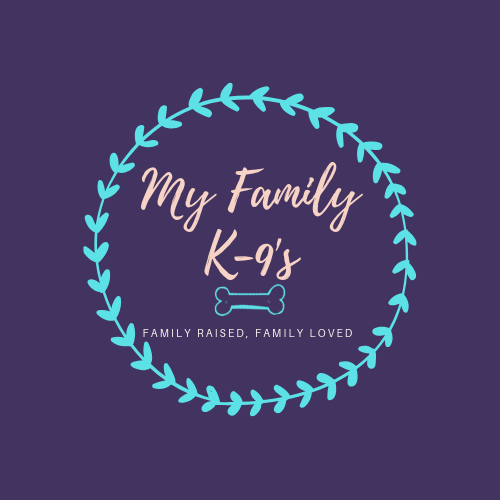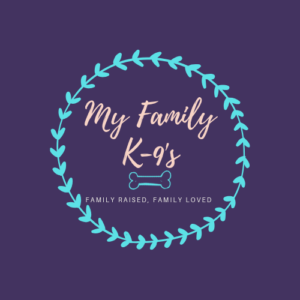Your pooch’s day by day walk is likely one of the features of his day. Taking a walk can furnish your canine with something other than a restroom break. It can give him physical exercise, mental incitement, and an opportunity to watch the area. The most effective method to prepare a pooch to stroll on a chain is positively significant. All things considered, if strolls are horrendous, you’re more averse to give them. Yet, there’s something else entirely to the story than whether you’re pulled down the square. Consider the stroll from your canine’s perspective. To ensure he’s genuinely having a good time, make sure to maintain a strategic distance from these five regular errors.
1. Rushing Bathroom Breaks
Where hounds go to the washroom is a significant choice. It’s not just about calming themselves, it’s tied in with speaking with the world-on the loose. Pooches utilize their pee to flag their essence to different mutts. Furthermore, thus, smelling other mutts’ pee educates a pooch all concerning different canines in the network, including their sexual orientation, age, and wellbeing. This arrangement of pee-mail stays up with the latest on what’s going on in their neighborhood.
While on a walk, hounds need to sniff out every one of the spots different canines have gone to the washroom, so they can leave a new store on top. This is what could be compared to human spray painting, saying, “Meanderer was here.” Male canines explicitly will lift their back leg as high as conceivable to get their pee up to the nose dimension of different mutts.
In the event that the pee or excrement isn’t a sufficient message, hounds in some cases scratch the ground with their feet to additionally stress their sign. Alongside leaving an extra viewable sign, they utilize unique organs between their toes to leave additional aromas on the ground as they scratch, adding considerably more effect to the fragrance mark.
Such an excess of sniffing and scratching requires fixation and time. Allowing your pooch the chance to smell the pee-mail and leave messages of his own will enable him to take advantage of his strolls. On the off chance that you need to keep your walk brief, or point of confinement the territories your canine does his business, think about showing him potty signals. This will give you a chance to disclose to him when and where you might want him to go.
2. Forestalling Sniff and Explore Time
We have five or six million aroma receptors in our noses, yet hounds have up to 300 million, contingent upon the breed. They likewise have a far bigger zone of their cerebrum dedicated to their feeling of smell, just as a Jacobson’s organ that encourages them distinguish regularly imperceptible scents, for example, pheromones. The majority of this means a feeling of smell that is in any event multiple times more noteworthy than a human’s. It’s practically outlandish for us to envision the unpredictability of the data they accumulate with their noses.
Similarly as we should need to glance around to take in the landscape, hounds need to smell all their condition brings to the table. Hauling your canine far from an intriguing fragrance, or requesting that he heel the whole route around the square, keeps him from really taking in everything around him and decreases the psychological incitement a walk can give.
A few mutts appear to be led by their noses and consider nothing else while on a fragrance trail. Legitimate preparing can help recapture their attention when out on a walk. Consider training your canine signs like “Watch me” or “Abandon it” to take his psyches off the smell and set his consideration back on you. Reward short blasts of behaving or free chain strolling with regular sniffing sessions to help support great strolling conduct.
3. Pulling on the Leash
From a pooch’s viewpoint, people stroll unreasonably gradually. To pursue fascinating fragrance trails and get where they need to go, pooches will drag their kin behind them as quick as they can oversee. A standout amongst the most widely recognized reactions we have to a canine destroying on the chain is to pull back. Be that as it may, this infrequently gets the ideal impact of a free chain. Rather, we end up in a chain back-and-forth, and with a huge and solid pooch, odds are the human will lose.
This is on the grounds that hounds have a restriction reflex, implying that in the event that you pull on their rope, they will pull back. On the off chance that you endeavor to drag them the other way, they will delve in and quit strolling. They are not doing this to be obstinate or controlling, it’s essentially the manner in which their body normally reacts. Be that as it may, all that weight on the chain is no picnic for their throat, especially for little canines or those inclined to falling trachea. It’s likewise truly baffling for your canine since it shields him from investigating and doesn’t furnish him with any heading about what you need him to do.
The most effective method to prepare a canine to stroll on a rope is basic however requires persistence. To empower a free rope (having the rope hang down in a “J” shape between you), stop and alter course at whatever point your pooch advances beyond you. When he swings to make up for lost time, remunerate him with acclaim, a little treat, and the opportunity to continue strolling. Possibly let your pooch walk when the chain is slack. The free rope will dispose of weight on his throat and keep you from setting off his restriction reflex. On the off chance that you as of now have a decided puller, consider utilizing a preparation outfit or head bridle while you deal with building up your pooch’s obliging strolling aptitudes.
4. Keeping Your Dog From Greeting People
Albeit a few breeds can be all the more unapproachable, many love individuals and consider each human a potential companion. Denying these canines the opportunity to make proper acquaintance with neighbors and outsiders in the city can baffle and disillusion them. Be that as it may, if welcome are clamorous, it’s no big surprise you need to cruise everyone by. Also, good natured outsiders can meddle with your preparation by empowering practices you are endeavoring to dispose of like hopping or pulling on the rope.
To begin with, show your canine to welcome individuals by sitting affably for taps and consideration. Begin at home with individuals he knows well until the conduct begins to happen consequently. At that point you’re prepared to go outdoors. The new area and his energy can set him back, so enroll the assistance of companions and neighbors to cement the conduct before proceeding onward to outsiders.
Second, don’t be reluctant to talk up and disclose your welcome principles to individuals you meet. Something as basic as, “Kindly don’t pat him until he sits,” can transform outsiders into preparing accomplices. On the off chance that somebody won’t coordinate, it’s ideal to pleasantly proceed onward. Convey treats in your pocket so you can compensate your pooch’s quiet conduct when the welcome should be stopped. Your pooch shouldn’t be rebuffed for the more odd’s activities.
5. Maintaining a strategic distance from Dog-Dog Socialization
The opportunity to associate with different individuals from their own species is overly energizing for some mutts. However, in the event that your pooch isn’t well mannered about it, you’ll turn and walk the other path at the principal sight of another little guy. Fervor yelping and lurching are humiliating and can give others the wrong impression about your pooch’s goals. Furthermore, in pooch society, it’s basically inconsiderate. Yet, maintaining a strategic distance from pooch hound welcome expels an incredible wellspring of fun and socialization for your canine.
Try to show your pooch how to approach and welcome different canines amenably, from your perspective, yet from the other canine’s also. Obviously, if your pooch’s responses originate from dread or animosity instead of fervor, staying away from canine pooch socialization while you work with a coach or creature behaviorist is the correct activity.
It’s imperative to show your pooch that he won’t get the opportunity to meet each canine he sees. That choice is up to you. On the off chance that welcome aren’t ensured, he’s less inclined to drag you towards different pooches and rather will figure out how to hang tight for authorization. To enable your pooch to concentrate on you within the sight of different mutts, use signs like “Look” or “Watch Me” to demand eye to eye connection. Or on the other hand give him another thing to do like “Sit” or nose focusing on. At long last, remember about the intensity of the “Abandon It” signal to tell him he won’t welcome that specific pooch.
When you do permit welcome, select just those mutts that appear to be well disposed and intrigued. One awful experience can damage your pooch. Indeed, even with mutts that look OK, inquire as to whether the canine is well disposed previously permitting a welcome. At that point guarantee the cooperation is quiet and amenable. Search for signs your canine is having a ton of fun, similar to play bows or a squirming backside. At the point when it’s a great opportunity to proceed onward, give your canine a signal like “We should Go” so he realizes the collaboration is finished. Obviously, whenever there’s any hint of worry in either hound, for example, a tucked tail, pressure in the body, or a yawn, serenely end the communication and leave.

